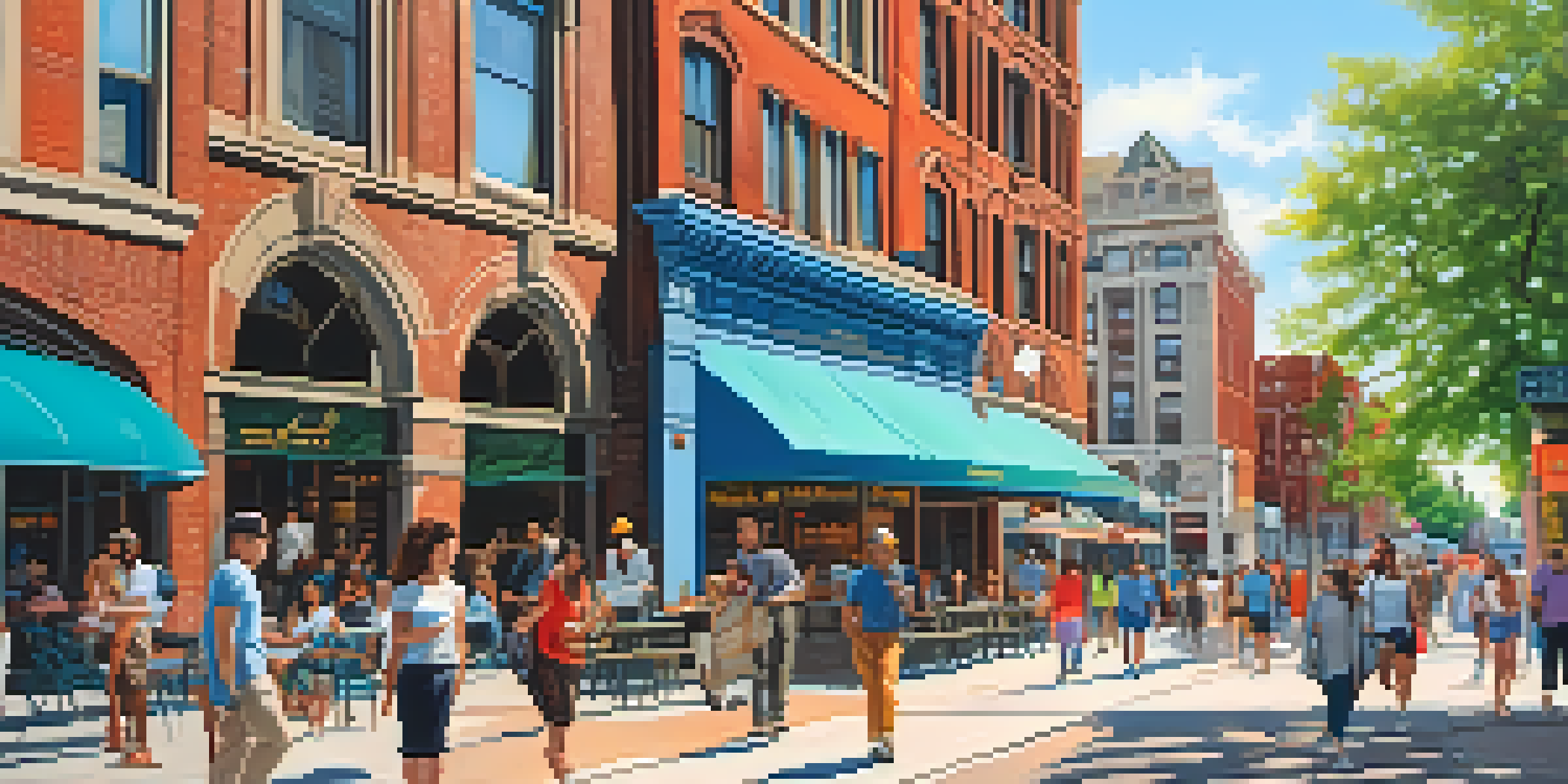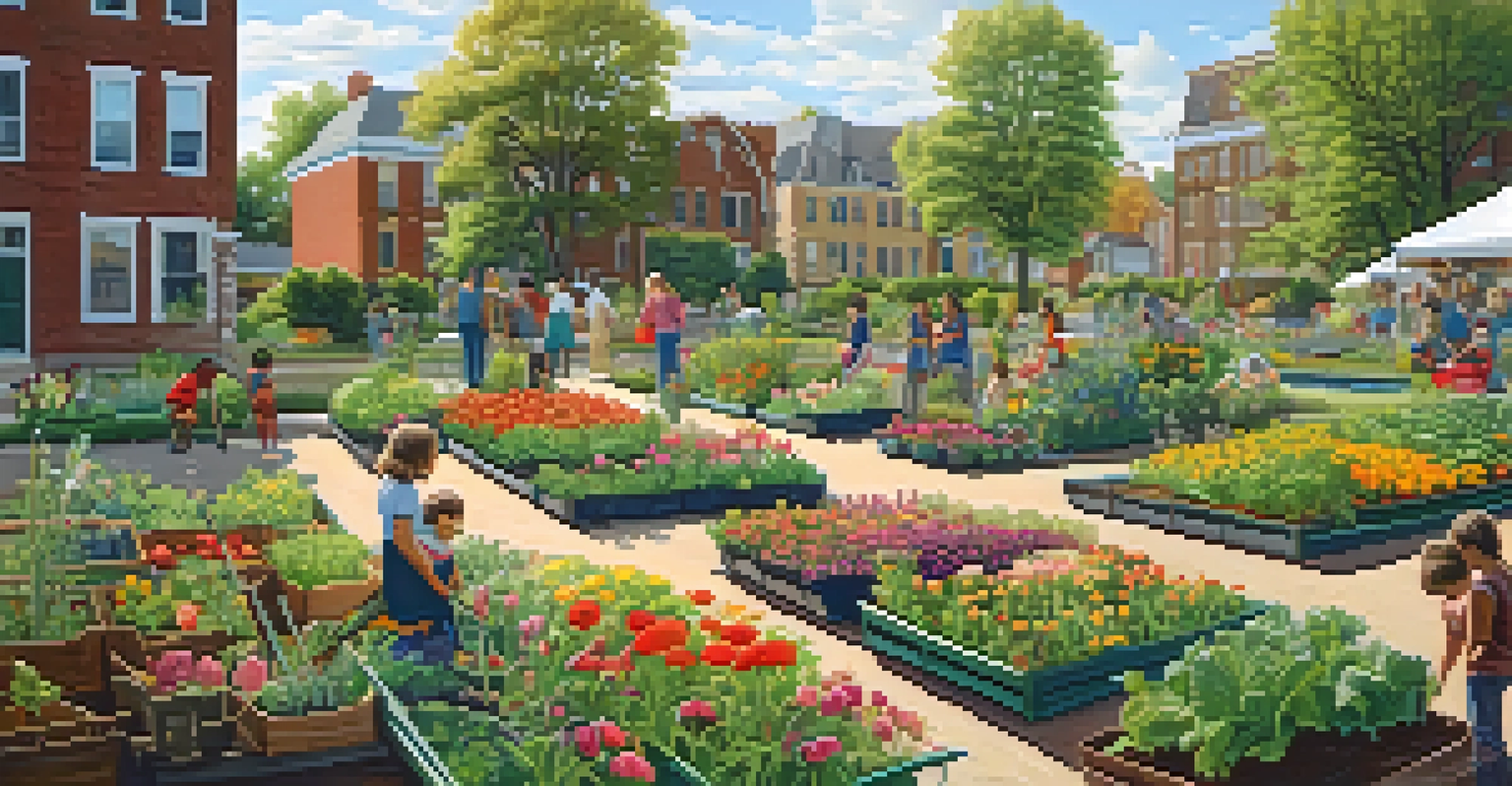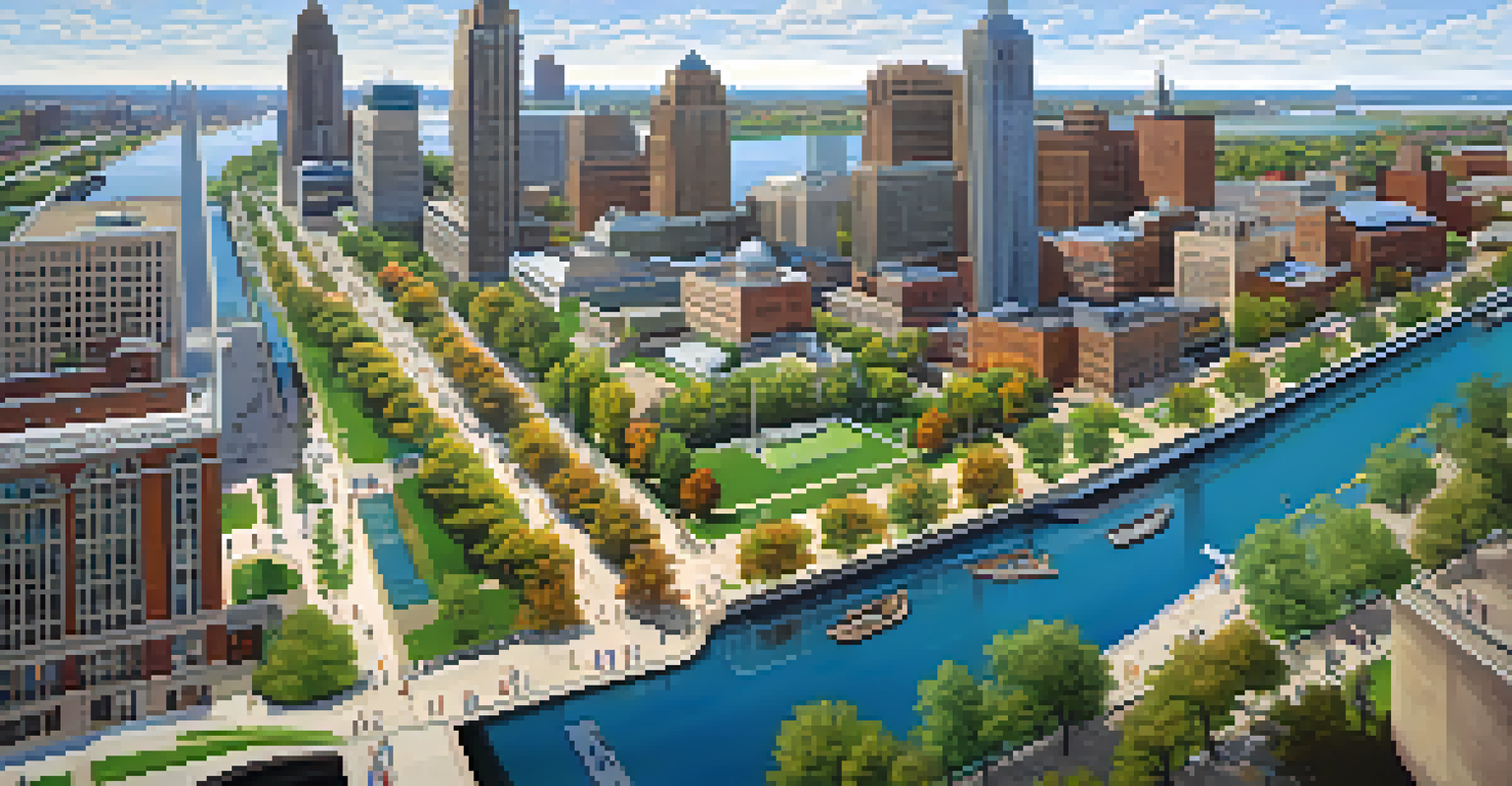Analyzing Detroit's Urban Renewal Projects: Successes and Challenges

The Historical Context of Urban Renewal in Detroit
Detroit’s urban renewal journey began in the mid-20th century, driven by industrial decline and population loss. The city, once a booming center for automobile manufacturing, faced significant economic challenges, prompting various renewal efforts. Understanding this historical backdrop is crucial to appreciate the complexities of current projects.
Urban renewal is not just about revitalizing neighborhoods but also about ensuring that the revitalization process is equitable and inclusive for all residents.
Many initiatives aimed to revitalize neighborhoods, improve infrastructure, and attract businesses. However, these projects often led to displacement and community disruption, raising questions about their effectiveness and fairness. The historical context sets the stage for examining both the successes and failures of these efforts.
Today, as Detroit continues to evolve, it’s essential to reflect on past lessons to inform future urban development. The city's rich history offers valuable insights into the intricate relationship between urban planning and community dynamics.
Key Successes in Detroit's Urban Renewal Efforts
Despite the challenges, several urban renewal projects have yielded impressive results in Detroit. For instance, the revitalization of the downtown area has attracted new businesses, restaurants, and cultural venues, breathing life back into the city. The emergence of vibrant neighborhoods showcases the potential for successful urban renewal.

Projects like the Detroit Riverwalk and the transformation of historic buildings into mixed-use spaces have significantly improved livability. These initiatives not only enhance the urban landscape but also foster community engagement and pride. They serve as shining examples of how thoughtful planning can rejuvenate a city.
Urban Renewal's Complex History
Detroit's urban renewal efforts stem from mid-20th century industrial decline, highlighting the challenges of community displacement.
Moreover, the focus on green spaces and sustainable development has become a hallmark of Detroit's renewal strategy. Community gardens and parks have emerged, promoting both ecological health and social interaction among residents, further contributing to the city's revitalization.
Challenges Faced by Urban Renewal Projects
While successes are notable, numerous challenges persist in Detroit’s urban renewal landscape. One major issue is gentrification, which often displaces long-term residents in favor of new developments. This creates tension between revitalization efforts and the need to preserve community integrity.
The future of urban environments will depend on our ability to integrate technology and community engagement in ways that enhance the quality of life for everyone.
Funding and resource allocation also present significant hurdles, with many projects struggling to secure necessary financial support. The competition for limited funds can lead to prioritization of high-profile developments over smaller, community-centered initiatives. This imbalance can hinder comprehensive urban renewal.
Additionally, the complexity of coordinating between various stakeholders, including city officials, developers, and community members, can complicate project implementation. Navigating these relationships is crucial for ensuring that urban renewal benefits all residents, not just a select few.
Community Involvement in Urban Renewal
Community engagement plays a vital role in the success of urban renewal projects in Detroit. Involving residents in the planning process ensures that developments meet the actual needs and desires of the community. This collaborative approach fosters a sense of ownership and investment in local projects.
For instance, initiatives like neighborhood forums and planning workshops have empowered residents to voice their ideas and concerns. This participatory model not only enhances transparency but also helps build trust between the community and city officials. When people feel heard, they are more likely to support and participate in renewal efforts.
Successes in Revitalization Efforts
Projects like the Detroit Riverwalk showcase how thoughtful planning can rejuvenate neighborhoods and foster community pride.
Moreover, grassroots organizations have emerged as critical players in advocating for community needs. Their involvement helps to ensure that urban renewal projects prioritize social equity and inclusivity, addressing the diverse needs of Detroit's residents.
The Role of Technology in Urban Renewal
Technology is increasingly shaping urban renewal efforts in Detroit, offering innovative solutions to age-old challenges. Smart city initiatives are being implemented to enhance infrastructure, improve transportation, and engage residents. These advancements can streamline urban planning processes and promote sustainability.
For example, the use of data analytics helps city planners make informed decisions about resource allocation and project prioritization. By analyzing demographic trends and community needs, planners can tailor projects that resonate with residents, increasing the likelihood of success. This data-driven approach marks a significant shift in urban renewal strategies.
Additionally, technology fosters greater community interaction through digital platforms. Residents can now easily access information about ongoing projects and provide feedback, bridging the gap between city officials and the community. This integration of technology enhances transparency and accountability in urban renewal efforts.
Case Study: The Detroit Future City Initiative
The Detroit Future City (DFC) initiative serves as a notable case study in urban renewal. Launched in 2012, it aims to transform the city through comprehensive planning and community engagement. DFC emphasizes sustainability, economic growth, and quality of life, making it a model for future projects.
One of the initiative's key components is its focus on land use and zoning reforms, which encourage innovative development while preserving green spaces. By promoting a balanced approach to urban planning, DFC strives to create a more livable city for all residents. This holistic perspective demonstrates the potential for transformative urban renewal.
Community Engagement is Essential
Involving residents in urban planning ensures developments align with community needs, enhancing support for renewal initiatives.
Moreover, DFC actively involves community members in its planning processes, ensuring that diverse voices are heard. This grassroots involvement not only strengthens community ties but also leads to more effective and inclusive urban renewal strategies. The success of DFC illustrates the power of collaborative planning in reshaping Detroit.
Looking Ahead: The Future of Urban Renewal in Detroit
As Detroit continues its journey of urban renewal, the future holds both promise and uncertainty. Ongoing projects must balance revitalization with the need to protect and support existing communities. Sustainable development practices will be paramount in ensuring that growth benefits all residents.
Emerging trends, such as the integration of smart technology and a focus on environmental sustainability, will shape upcoming initiatives. By leveraging these advancements, Detroit can create a more resilient urban landscape that meets the needs of its diverse population. The city's commitment to innovation will be crucial in navigating future challenges.

Ultimately, the future of urban renewal in Detroit hinges on collaboration and inclusivity. Engaging community members, leveraging technology, and learning from past experiences will pave the way for a more equitable and vibrant city. As Detroit moves forward, it has the opportunity to redefine urban renewal, making it a model for other cities facing similar challenges.